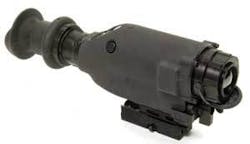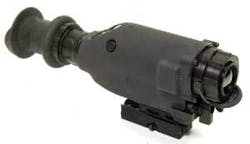BAE Systems completes qualification of new thermal weapon sight
By John McHale
LEXINGTON, Mass. - Engineers at BAE Systems have completed U.S. Army qualification of the next-generation family of light, medium, and heavy thermal weapon sights (TWS).
There are three variants of the TWS II, all designed around the BAE Systems MicroIR microbolometer-based sensor architecture. All three are being developed and qualified in partnership with program executive office-soldier at Fort Belvoir, Va., to provide Army infantry and U.S. Marines with the ability to detect and engage targets day or night, in all weather and battlefield obscurant conditions.
Similar MicroIR technology is also being used in cameras serving homeland security customers in public safety, industrial, and security sectors, BAE Systems officials say.
TWS II enables individual and crew-served weapon gunners to see deep into the battlefield, increasing their surveillance and target acquisition range.
“These thermal weapon sights will give our fighting forces a technological advantage on the battlefield by greatly improving the individual soldier’s capabilities for surveillance and target acquisition under day and night battlefield conditions,” says Bruce Zukauskas, BAE Systems’s director of military IR products at Lexington, Mass.
BAE Systems’s TWS family of sights, produced under this contract, complement current and future infantry armament-from light to medium and heavy weapons. The light-weapon thermal sight weighs less than two pounds and mounts primarily to M4 carbines and M16 rifles.
The medium- and heavy-weapon thermal sights weigh less than three and four pounds, respectively. The latter provide airborne, air assault, Ranger, and mechanized infantry forces with long-range target detection to engage their crew-served armaments.
BAE has also received additional base and option production contract modifications valued at $73 million. The modifications bring the total current contract value to $200 million.
BAE Systems received a five-year, $111 million TWS II contract in March 2004, with total options of more than $250 million to produce as many as 28,000 thermal sights. The latest order is part of this total.
BAE Systems is also supplying Kongsberg Protech AS of Norway the TIM1500 thermal imaging module for the Remote Weapon Station on the U.S. Army Tank Automotive and Armaments Command’s Stryker vehicle.
The Stryker, an eight-wheeled armored vehicle, provides infantry protection in open terrain and quick transport to critical battlefield positions. The TIM1500 program will provide Stryker with an advanced, uncooled thermal imaging camera that identifies targets deep in the battlefield, both day and night, in all weather and obscurant conditions.
The Stryker TIM1500 and the thermal weapon sight variants share the same thermal sensor engine design. “The TIM1500 provides the extended range and performance necessary to achieve the mission,” says Bruce Musicant, BAE Systems’s Stryker TIM1500 program manager.
For more information visit www.na.baesystems.com.

